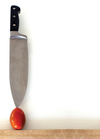Comparing seven current video editing programs
|
Editing vacation videos in Linux was still somewhat of a nightmare just a few years ago. Existing programs could be counted on one hand and most of them were difficult to operate. Things have changed, at least as far as quantity, and many open source tools are now vying for attention.
But what about quality? To find out, we tested seven popular editing programs: Auteur, Flowblade, Kino, LiVES, OpenShot, PiTiVi, and Cinelerra. The makers of the popular Kdenlive and the professional Lightworks were working on new versions as this issue went to press, so they will be evaluated in a later issue (see the "Stragglers" box).
Anyone searching the depths of the Internet will likely find additional video editing programs, but they might be temporarily on hold or even officially scrapped.
[...]
Buy this article as PDF
Pages: 8
(incl. VAT)





